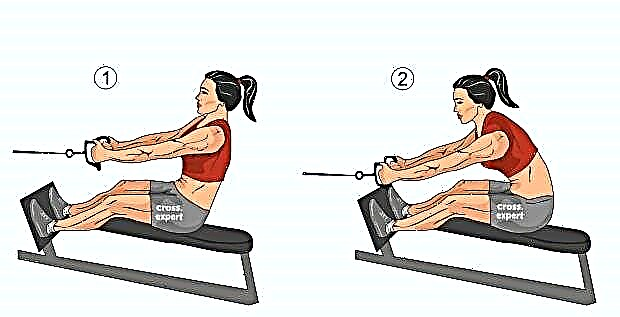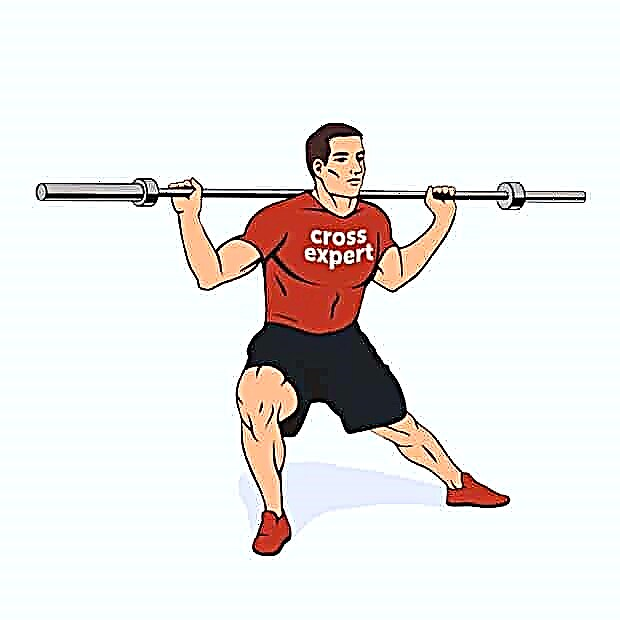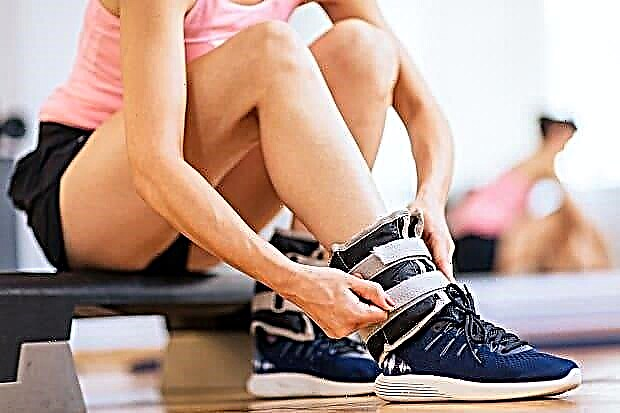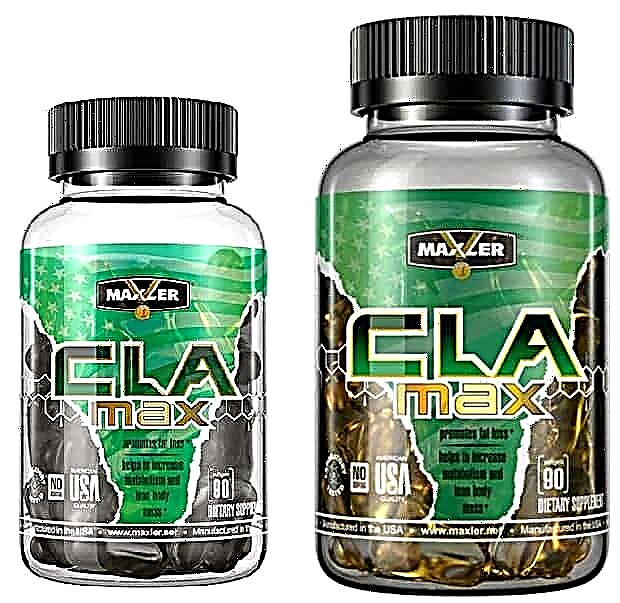Most CrossFit exercises involve all the muscles in the body in one way or another. This imposes certain requirements on the muscles of the core-gluteal muscles, abdominal muscles, iliopsoas and extensors of the spine, since they serve as a link between the girdle of the upper and lower extremities. To prepare yourself properly, you definitely need to include an exercise such as bending with a barbell on your shoulders in your training plan. Today we will talk about whether this is useful for girls, what muscles work, and also about the correct technique of execution.
What muscles are involved in the work?
When bending with a barbell on the shoulders, the gluteal muscles are actively working: small and large, the extensors of the back and abdominal muscles are statically involved. To a small extent, the muscles of the back of the thigh also work - they are responsible for bending the leg not only in the knee, but also in the hip joint.

The powerful development of the listed muscle groups will not only increase your success in various sports disciplines, but will also be an excellent prevention of pain in the lower back - the notorious "osteochondrosis", a disease, in fact, caused by weakness of the muscles of the lower limb and lower back not the correct name. Plus, you add functionality to the muscles of the shoulder girdle due to a more perfect interaction with the lower limb girdle, the strength potential of the back, chest and arms will increase significantly.
Are there any benefits for girls?
The benefits for girls from performing inclinations with a barbell on their shoulders is obvious - elastic tightened buttocks, slender legs have not spoiled a single girl. However, in addition to the aesthetic aspect, there are several not so obvious "bonuses":
- Firstly, strong muscles of the lower back are important for any girl planning to become a mother - in the late stages of pregnancy, the center of gravity shifts, which transfers more than usual load to the lumbar spine - nothing, except muscles, holds our vertebrae - so, the stronger your lower back muscles, the less discomfort you will experience while carrying a baby.
- Secondly, any amplitude movement in the hip joints leads to activation of blood circulation in the muscles of the pelvic floor, and this, in turn, the prevention of diseases such as varicose veins of the lower extremities, uterine fibroids (not hormonal genesis, of course), osteoporosis of the femoral heads ...
Exercise technique
Understanding the technique of performing bends with a barbell on the shoulders is impossible without understanding the anatomy of the lumbosacral region. Relatively speaking, you can bend by flexing the hip joints with a fixed knee, or by flexing in the lumbar spine, and you can bend in the hip joints and in the lower back at the same time - as it happens when we need to bend as low as possible.
In the lower back, you bend when you need to bend over something, like when you wash your socks in the bath. Flexion in the hip joints with a fixed lower back can be observed in the gym when we see an exercise such as deadlift. So, it is precisely such a movement that interests us in the exercise, inclinations with a barbell on the shoulders, the first two described options are absolutely unacceptable, due to the very high risk of injury.
Initial position
- Stand, feet shoulder-width apart, or slightly wider.
- The knees are slightly bent, support for the entire foot (maintained throughout the entire movement).
- The lower back is bent and rigidly fixed - in this position it remains throughout the entire exercise.
- The bar is resting on the shoulders, the shoulder blades and shoulders are lowered, the grip is arbitrary, depending on the anthropometry and mobility in the shoulder joints.
- The gaze is directed upward or in front of you.
Slopes
We bend the hip joints in isolation, due to this we bend forward until we feel a stretch in the gluteal muscles. We fix this sensation, linger at the lowest point for a second or two, straighten the body under control, due to extension in the hip joints. Movement of the pelvis is extremely undesirable - you can often see a technique in which at the top point the athlete straightens the body completely and slightly moves the pelvis forward - this option is incorrect, since it transfers the load from the muscles and tendons to the lumbar vertebrae.

An important point about the weightlifting belt: this accessory turns off the muscles of the lower back and abdominal muscles, further disrupting the trophism of these zones due to the strong compression of the blood vessels. If your task is to load the glutes in isolation, of course, a weightlifting belt might make sense, but it makes more sense to use a more suitable tool for this purpose.
Accordingly, we do not use a belt in inclines with a barbell - our insurance is the gradual development of all muscles involved in the movement, a systematic increase in working weights, and an ideal technique.
What can replace the slopes with a barbell on the shoulders?
Obviously, to replace the slopes with a barbell on the shoulders, movements are suitable where it is necessary to perform extension in the hip joint. These exercises will be:
- deadlift, an option when there is a small angle of flexion in the knee joints;
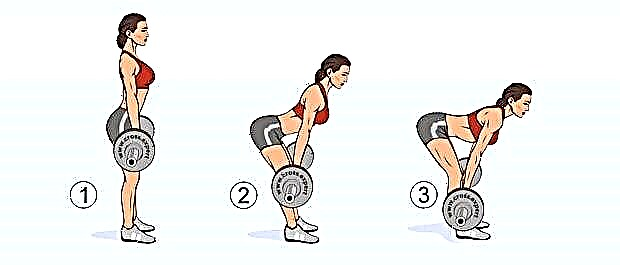
- hyperextension - an option when the support cushion is located below the spines of the iliac bones, in other words, rests on the hips; for a complete replacement of inclinations with a barbell, it will not be superfluous to use weights - you can hold it in outstretched arms, or press it to your chest. The most difficult option is placing the weights on the back, as close to the head and neck as possible - this option is the most traumatic and therefore not recommended at the initial stages of training.

© Makatserchyk - stock.adobe.com
- forward bends in the hip joints, when the lower block of the crossover simulator is used as a burden - standing with your back to the block, the handle is passed between the legs and held by a narrow grip;
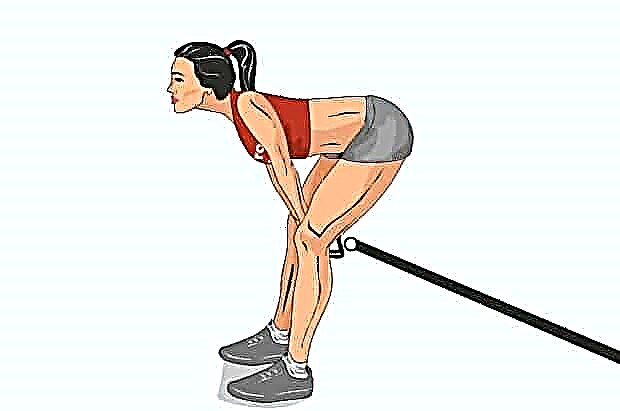
- plie squats, when the legs are much wider than the shoulders, and the burden is fixed in the lowered hands, if we are talking about a dumbbell or weight, or rests on the shoulders, if we are talking about a barbell;

- lower block traction, in the version when you are trying to bend forward with a fixed lumbar spine in the negative phase of the movement, moreover, you can only use the forward bend due to flexion in the hip joint, without additional flexion of the arms - this way you can safely work out your gluteal muscles and lumbar part of the spine extensor.
